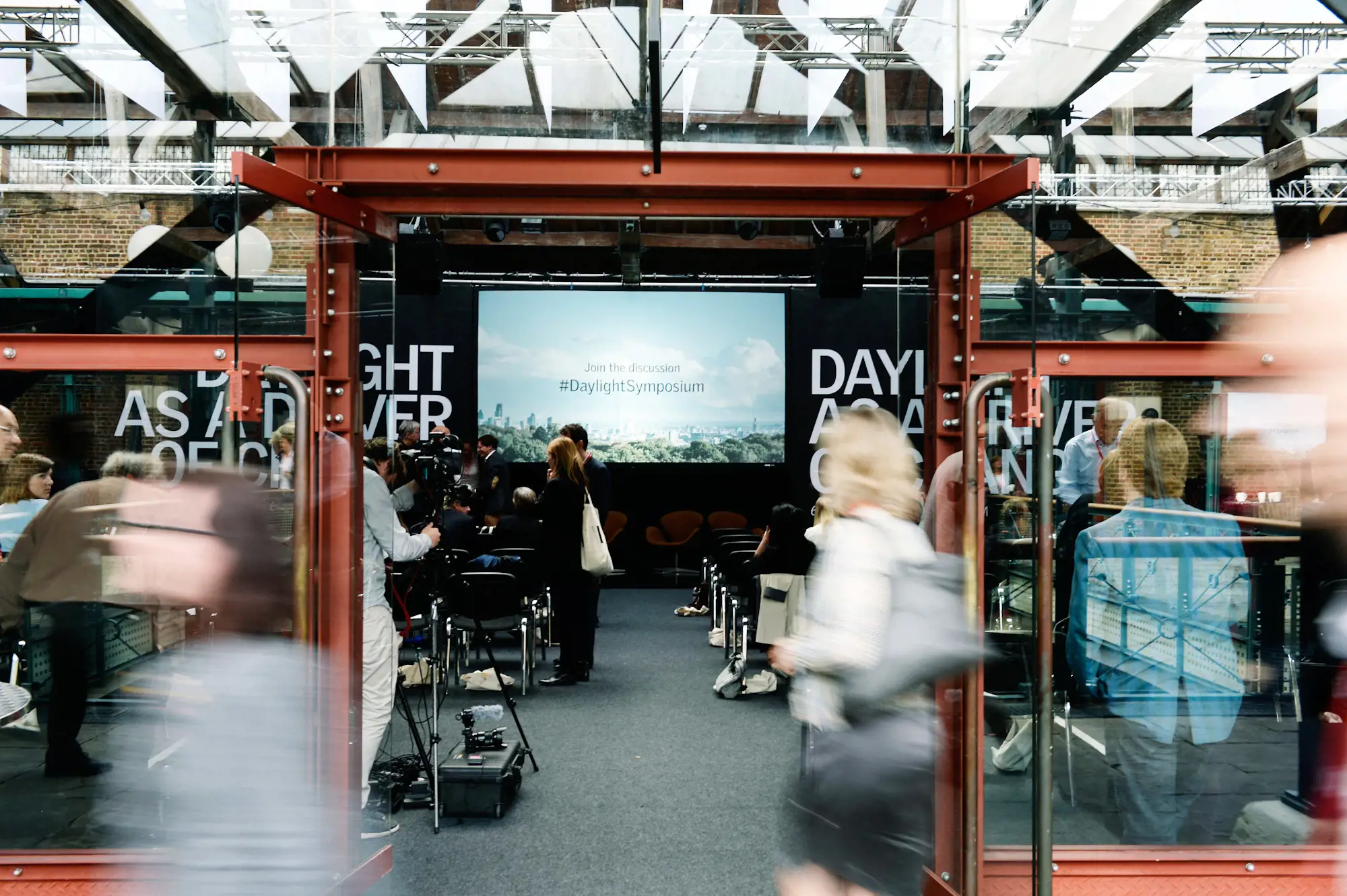Daylight as a Driver of Change
The 6th VELUX Daylight Symposium took place at Tobacco Dock in London on 2 and 3 September 2015.
The theme of the symposium was “Daylight as a driver of change” and focused specifically on the challenges faced by today’s 24/7 society; how we live our lives with more than 90% of our daily routines happening indoors, and how it affects our synchronization to nature. How can we ensure that our modern lifestyle is in balance with nature’s daily and seasonal cycles? How can spaces and occupants adapt to changing daily and seasonal conditions? How can architecture and daylight interact to stimulate our senses? How can we rethink our homes, workplaces and public spaces into healthier and more sustainable living environments?
These questions were addressed and debated with presentations from research as well as experiences and viewpoints from engineering and architectural practices – covering aspects related to the use of daylight and considering people, politics, economy and scale.
Programme
2 SEPTEMBER 2015
SYMPOSIUM DAY 1
09:00 – 10:10
Official opening by Michael K. Rasmussen, VELUX Group (DK) Claus Grube, Ambassador of Denmark to the United Kingdom (UK) “International Year of Light 2015” by John Dudley (F) “Daylight as a Drive for Change” by Caroline Buckingham (UK)
10:10 – 10:40
Keynote “Daylight and Architecture” by David Nelson, Foster and Partners (UK)
11:10 – 13:00
“Architecture for Wellbeing and Health” by Koen Steemers, Cambridge University (UK)
“Designing for Access to Nature in Residential Buildings” by Nick Baker (UK)
“Daylight Exposure in Relation to Sleep, Wakefulness and Health” by Arne Lowden, Stockholm University (S)
“Home Design that Bridges Human Behavior and Needs with Daylight” by Victoria L. Revell, University of Surrey (UK)
“Daylight for People with Sight Loss” by Paul Littlefair, BRE (UK)
“Architecture for the Senses” by Christina Augustesen, Grontmij (DK)
“Architecture with Daylight – Energy vs Health” by Arne Hülsmann, Andres Lichtplanung (D)
14:00 – 15:30
“First do no harm: Practicing Lighting Design or Medicine….. without a license?” by Deborah Burnett, Benya Burnett (USA)
3 SEPTEMBER 2015
SYMPOSIUM DAY 2
09:00 – 10:30
“Sustainable Architecture, Modern vs Vernacular Architecture in China” by Song Yehao, Tsinghua University Beijing (CHN)
“Daylight in Urban Texture” by Natalia Sokol, Gdansk University of Technology (PL)
“Light in Gunnar Asplund’s Public Library” by Martin Scwartz, Lawrence Technical University in Detroit (USA)
“Design for Future Offices” by Nick MacLiammoir, Arup (UK)
11:00 – 13:00
“New Tools for Easy and Accurate Simulation of Complex Daylighting” by Henrik Wann Jensen, Luxion (USA)
“Evaluation of Daylight Characteristics in Working Environments” by Alessia Pedace, University of Palermo (I)
“Daylight Metrics and their Sensibility” by Sophie Stoffer and Kathrine Brejnrod, Aarhus University (DK)
“Evaluation of Buildings in the Future” by Elpida Vangeloglou, Ramboll (UK)
“Daylight Standards: Some Lessons from History” by Alan Lewis, University of Manchester (UK)
“Diffuse Daylight Autonomy” by Bernard Paule, ESTIA (CH)
“The Urgent Need and Battle to Modernize Daylight Regulation” by Paul Rogers, BAU Architects (S)
“The European Daylight Standard – Status” by Marc Fontoynont, SBI/AUC (DK)
14:00 – 14:45
Keynote “Daylight, Perception, Movement and Embodied Experiences” by Olafur Eliasson (DK/D)
14:45 – 15:15
Winners of Natural Light: Mariana Arando and Luca Fondello (AR)
Photo: Jakob Boserup
Tobacco Dock, London
Tobacco Dock is a Grade 1 listed warehouse in east London. It was constructed in approximately 1811 in the Docklands area and it served primarily as a secure bonded warehouse for the receipt and storage of imported tobacco.
In 1990, the building was converted into a shopping centre at a development cost of £47 million. The intention was to create the “Covent Garden of the East End.” However, the scheme was unsuccessful, and it went into administration.
In 2003, English Heritage placed Tobacco Dock on the Buildings at Risk Register, with an English Heritage spokesman commenting in 2004: “We see Tobacco Dock as a future priority because it is too large and important a site to be left standing empty. It is one of the most important buildings in London and if brought back into use it would reinvigorate the whole area.”
Several ideas have been in play for the future of the building – And in 2012, the 16.000m2 space was relaunched as an event venue – being able to accommodate over 10.000 attendees. It has also been used for music videos and TV shows – and even as accommodation space for 2,500 soldiers deployed to guard the Olympic Games in London in 2012.
Presentations
All talks are now available to watch or revisit for everyone. We hope to spark interest in becoming a part of the next symposium.




